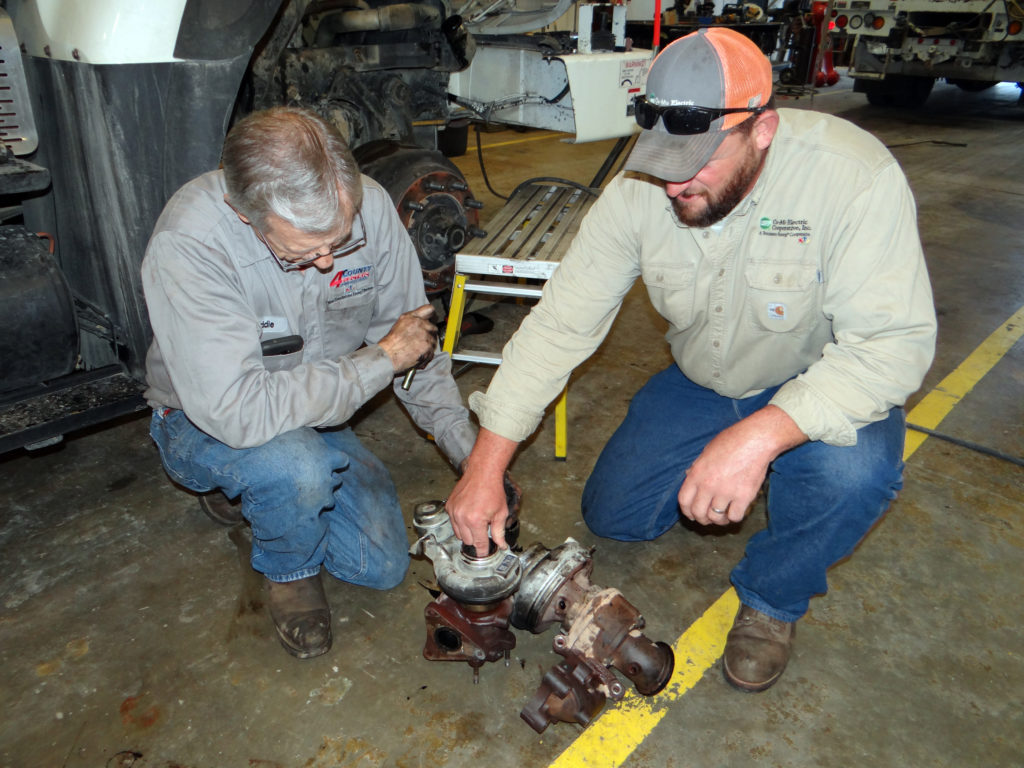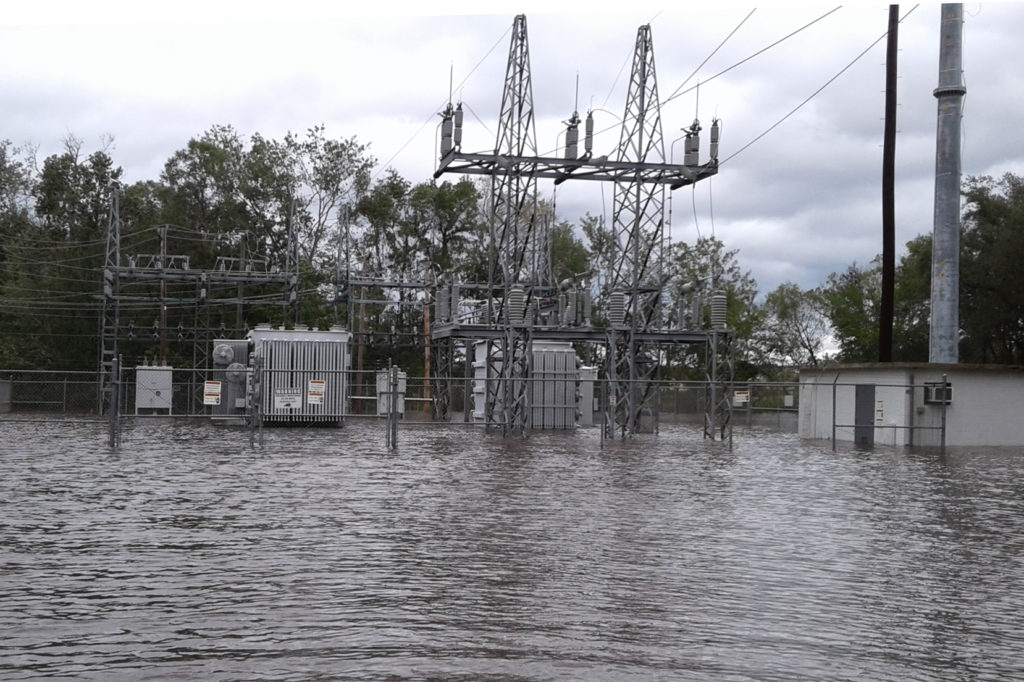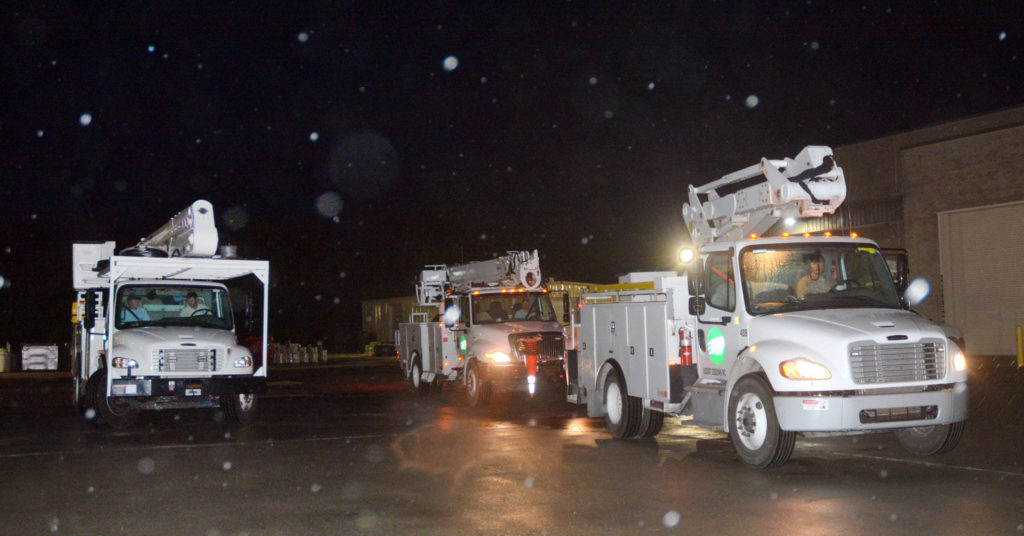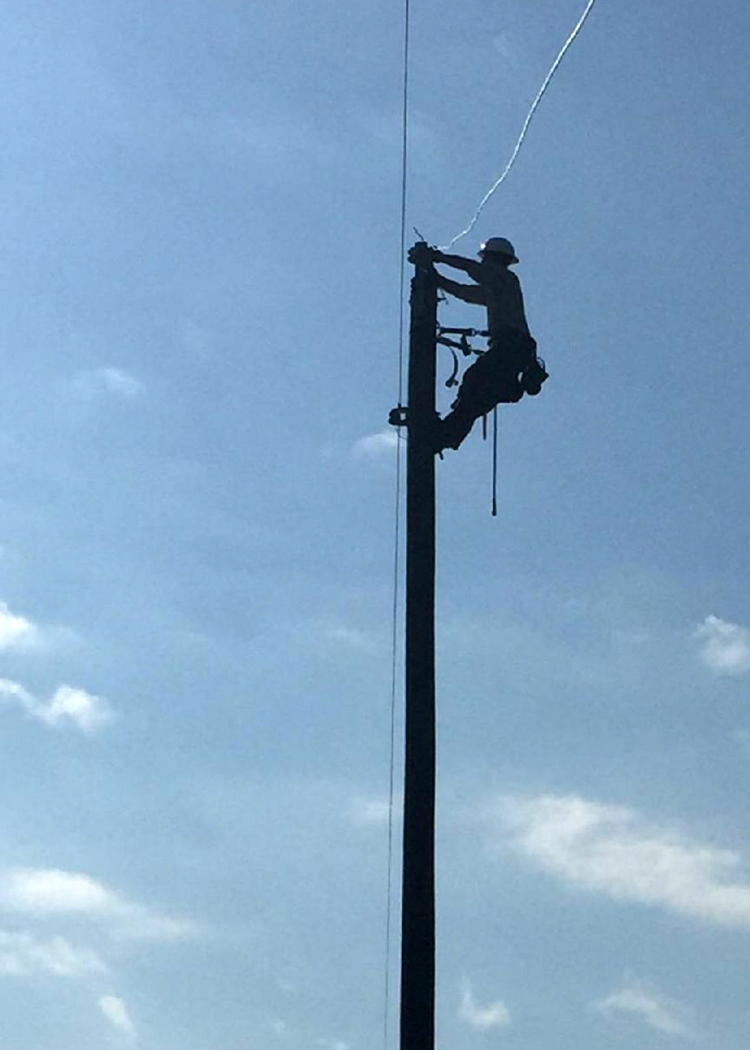
Grant Petree was determined to help get the lights back on for electric cooperative members left without electricity by Hurricane Irma. Hours into the volunteer assignment, the veteran lineman from Co-Mo Electric gained a new appreciation for co-op mutual aid.
Petree’s bucket truck broke down early Sept. 13 in Mississippi as he was headed from Co-Mo’s headquarters to Clay Electric Cooperative in Florida.
“We heard a loud pop underneath the hood and dark smoke started blowing out the exhaust,” said Petree. “That’s when we lost power to the truck.”
While five other Co-Mo Electric vehicles continued on the 1,054-mile trek. Petree called Co-Mo’s maintenance for clues about what to do with the disabled vehicle. That led to calls between safety and loss coordinators at the Association of Missouri Electric Cooperatives in Springfield and the Electric Power Association of Mississippi in Ridgeland.
Soon, a team from 4-County Electric Power Association in Columbus, Mississippi, about 20 miles away, was on the scene helping the helper.

Mechanics dispatched by Eddie Pennington, 4-County fleet management supervisor, discovered one of two turbochargers had failed. New turbochargers were available in Birmingham, Alabama, so Petree and two 4-County staffers made the 250-mile round trip to get the necessary parts.
“This is what it’s all about. Cooperation among cooperatives,” said Pennington. “We’re doing everything we can to get this vehicle repaired and back on the road. And we know they’d do the same for us.”
Petree got back on the road just after dark on Sept. 13, and is adding his skill and the truck’s capabilities to the ongoing struggle to restore electric service to members of Clay Electric.
The Keystone Heights-based co-op had restored power to more than 97,800 members as of early Sept. 14, with about 57,300 still in the dark.
“An additional 800 line and vegetation personnel from other cooperatives and contractors are assisting our employees in the field,” said Wayne Mattox, Clay Electric’s communications manager.
The Missouri crews are joining a growing list of co-ops from 25 states now committed to power restoration in Florida, Georgia and South Carolina. Since late Sept. 12, additional co-op crews have headed to the region from New Jersey, Virginia, and Texas.
In South Carolina, overall outages were down to about 5,000 as crews headed out for restoration work before dawn, Sept. 14. Remaining outages were concentrated in two co-op territories on opposite sides of the state.
In addition to line crews and vegetation management specialists, engineers, mechanics and staking technicians have also deployed for what some co-ops are telling members could be weeks-long restoration.
Some co-ops that completed restoration work after Hurricane Harvey hit Texas and Louisiana two weeks ago have sent personnel and equipment to the Southeast.

“Restoring power after a storm of this magnitude is not easy, and we’re happy to offer our crews and resources to help bring electricity back,” said Wayne McKee, vice president of operations for Pedernales Electric Cooperative.
The Johnson City, Texas-based distribution co-op sent 21 personnel to Quincy, Florida-based Talquin Electric Cooperative. About 32,000 of the co-op’s meters were knocked out as Irma moved through its territory. Less than 100 Talquin EC members were still without electricity by mid-morning, Sept. 14.
SECO Energy pushed down its outage numbers about 35,000 as of midday Sept. 14. More than 90,000 members are back online, the Sumterville, Florida, co-op said.
Although many co-ops are making steady progress restoring electricity to their members, flooding, debris removal and accessibility continue to delay full damage assessments and major repairs in some areas.
“Some electric membership corporations saw damage to as much as 90 percent of their service territory,” said Terri Statham, manager of media relations for Georgia Electric Membership Corp. “Crews are working steadily to address the 122,000 remaining outages across the state.”
Georgia’s peak co-op outage figure was 550,000 in the hours after total damage assessment from Irma on Sept. 10.
Excelsior Electric Membership Corp., headquartered in Metter, Georgia, reduced its outage numbers from a high of 11,000 to about 50 Sept. 14, with the help of fresh mutual aid crews.
“It was only a few years ago when electric cooperative crews from the Southeast and nearby states helped restore power to our members after Hurricane Isabel,” said Gregory White, CEO of Northern Neck Electric Cooperative. The Warsaw, Virginia-based distribution co-op sent crews to assist Excelsior EMC.
Several other co-ops in Alabama, North Carolina and the Chesapeake Bay region that previously held crews to handle potential outages related to Irma also sent volunteers to co-ops that suffered storm-related outages.
About 210 employees of North Carolina co-ops were working in the state or elsewhere on restoration mutual aid projects by late Sept. 13.
Irma knocked out power to about 12,000 co-op-served meters in North Carolina, primarily as high winds and heavy rains pounded the state’s mountain west. Crews were working to restore service to about 4,800 meters served by the state’s electric co-ops.
Derrill Holly is a staff writer at NRECA.
